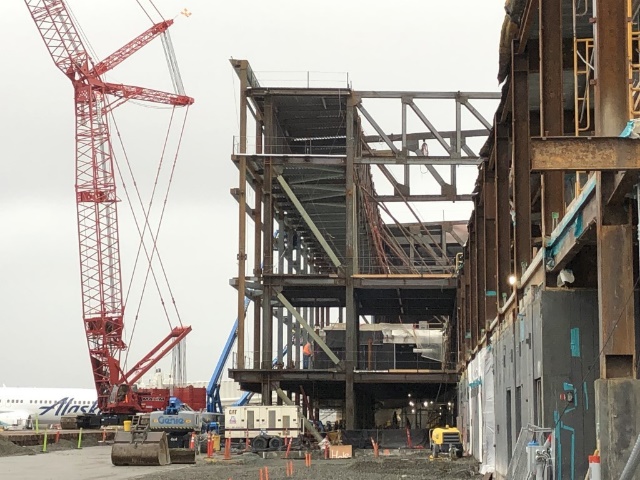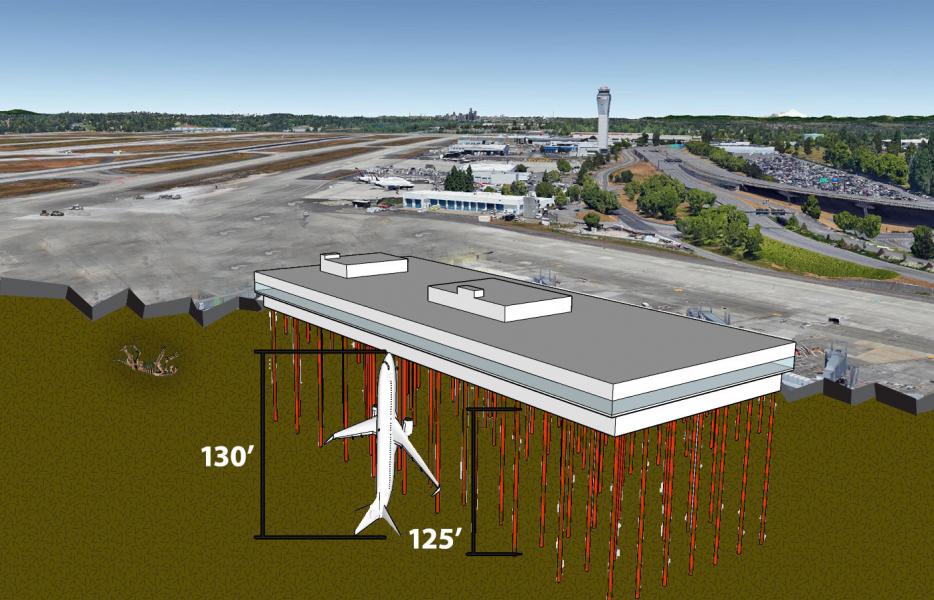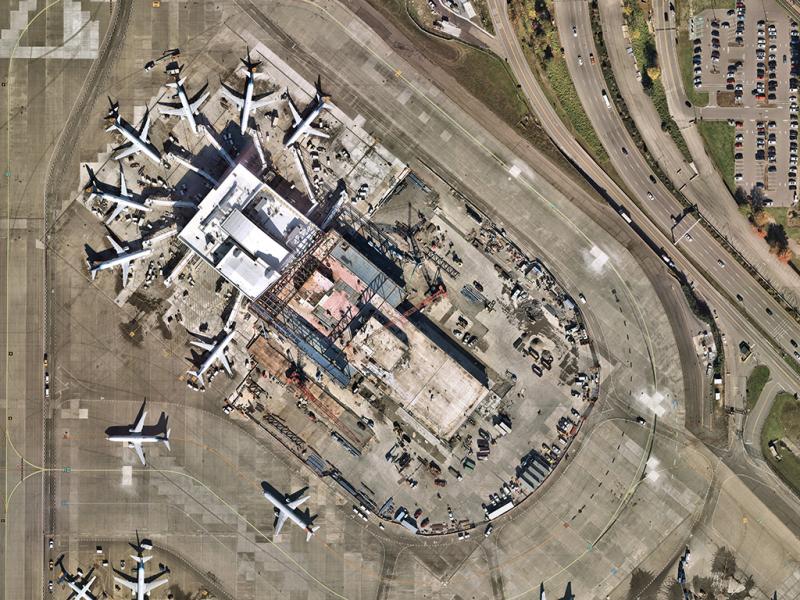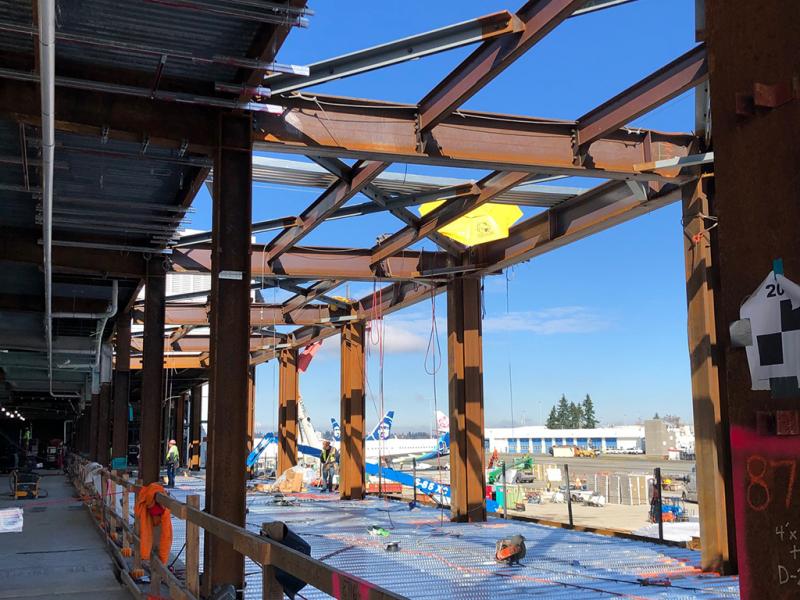Hugs can make everyone feel happy, healthy, and secure — the same applies to buildings like the North Satellite at Seattle-Tacoma International Airport (SEA). As part of modernization efforts, the building is getting what amounts to a “seismic hug” to keep the building safe, healthy, and strong.
The south end of this very visible airport construction project has been demolished down to its steel frame and is being seismically strengthened. Here are five fast facts on why we are hugging it out at SEA Airport.
1. Like a bodybuilder relies on their belt, this middle-aged building needs a little support!

Coined by the North Satellite project team, the term "seismic hug" is used to describe the unique approach taken to reinforce this satellite facility by building around it. Like a weightlifting belt provides support and stability to a bodybuilder, a new steel structure has been constructed around the perimeter of the existing terminal building. Known as a steel moment frame, this new structural system is made up of columns and beams that connect to concrete pilings anchored in the ground for a solid foundation and seismic retrofit of the nearly 50-year-old building.

2. One step at a time
With construction complexities such as land constraints and active airport operations, it is critical to maintain the schedule and sequence of planned construction activities, known as phasing. Careful phasing is taken into consideration to minimize impacts to travelers and airport operations, maintain team member safety, and account for space and site access for materials and machinery. To complete the seismic hug, crews worked in a phased approach to demolish the interior of the existing facility, construct new concrete building piles, and install structural steelwork.
3. Concrete foundations as tall as a Boeing 737 is long
Concrete building piles, a type of foundation that is like a concrete column buried deep into the ground, provide structural reinforcement to the North Satellite. Each concrete pile reaches down into the ground from 30 feet to as deep as 125 feet (nearly the length of a Boeing 737-800). A total of 154 of them will be installed! The pile depths are determined by engineering analysis of soil conditions, loads in each particular area, and underground constraints (e.g., train tunnel). A critical component of this modernization project is to address the seismic issues as a result of the 2001 Nisqually earthquake.
Bonus Fact: Speaking of underground, did you know that a giant ground sloth (dating back to the Ice Age) was unearthed near the north end of SEA Airport 59 years ago? This find is on display at the Burke Museum.

4. Hugs make everything better
Renovating and building airport facilities requires a team of planners, architects, engineers, and contractors to develop a comprehensive plan that addresses the project’s goals while also accommodating ongoing operations, external challenges, and unforeseen site conditions. The idea for the seismic hug came about at 30 percent design. Instead of replacing the entire structure, this hug saved tens of millions of dollars while creating the following benefits:
- Maintains airport operation at the North Satellite longer
- Preserves elements of the existing structure and iconic airfield views
- Allows for proper evaluation of the old existing building (saving design time)
- Reduces our carbon footprint (reducing environmental impact)

5. Something old, something new
The seismic hug allowed SEA to reduce its carbon footprint by avoiding replacement of the entire North Satellite facility, which has:
- Reduced carbon emissions - which would have been created from steel fabrication and materials transport
- Minimized construction waste - more than 95 percent of construction waste will be recycled and diverted from landfills across the entire project
- Reused elements of the existing structure - which contributes to reducing SEA’s environmental impact
These efforts and other sustainability achievements at the North Satellite Modernization project support its pursuit of a Leadership in Energy and Environmental Design (LEED) Silver certification with the U.S. Green Building Council.










